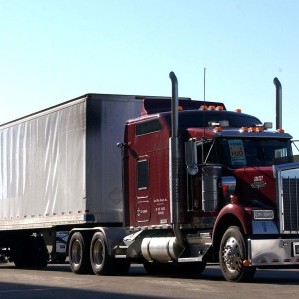9.2 billion tons of freight were moved by truck across the United States in 2012. With a value of $13.6 trillion dollars, that is a weight equivalent of 25,000 Empire State Buildings with a value equal to 3/4 of the United States GDP. These massive numbers continue to grow in size and the monumental task of filling warehouse inventories and supplying the nation’s consumers is being conducted by 3.5 million truck drivers…many of whom are overloaded with both work and payloads.
As the nation’s consumer needs grow, many truckers are finding their vehicles overloaded with cargo as companies attempt to squeeze ever larger loads onto single vehicles in order to cut their transportation costs and maximize their profits. This is a direct violation of both state and federal regulations and is a growing problem within the trucking industry.
Federal Motor Carrier Safety Administration regulations require that cargo be firmly secured within a vehicle using the appropriate combination of tiedowns, wedges, chocks, cradles, shoring bars, and dunnage bags for the cargo being carried. These devices reduce the likelihood that a cargo will shift during transport and cause the vehicle to become unbalanced. Unbalanced and improperly loaded cargos are estimated to be the cause of 7% of serious truck accidents.
Moreover, vehicle overloading can cause axles, suspension systems, the powertrain, tires, or brakes to fail. It can also cause the frame of the vehicle to bend or split making the vehicle unsafe to operate. An overloaded vehicle will have an increased downhill speed, have difficulty climbing up hills, and will require greater distance to stop. It will also have an elevated center of gravity which makes it harder to steer and more prone to rolling over. Combined, overloading a commercial vehicle unnecessarily increases the risks that the truck will be involved in an accident.
In 2004, a AAA sponsored survey showed that 25,000 truck involved accidents were caused because cargo was improperly secured. A truck that is overloaded is more likely to roll, tip, or jackknife, In 2013, jackknifing was reported in 137 accidents, or 5% of all fatal trucking accidents. It’s further estimated that 15,000 trucks per year rollover causing nearly 12% of fatalities in accidents involving semi-trucks.
FMSCA statistics from 2013 showed that 83% of fatal truck accidents involved trucks whose Gross Vehicle Weight Rating (GVWR) was 26,000 lbs or greater. These large trucks are the most likely to be overloaded due to their size and the amount of cargo they can carry. By comparison, trucks with GVWR’s between 10,000 and 26,000 lbs were involved in 17% of fatality causing accidents. While suspected in many of these accidents, overloading was cited as a cause of the accident just .2% of the time.
What’s most concerning about these statistics is that 59.5% of the accidents involving GVWR’s of 26,000 lbs or greater involved vehicles that were carrying flammable liquids. A further 11% involved vehicles carrying explosives, gases, or other flammable solids. These secondary risk factors make collisions with overloaded vehicles carrying these materials especially lethal. And, because these cargoes tend to be destroyed during collisions, it makes it difficult to prove whether a vehicle was in fact overloaded even though law enforcement may strongly suspect overloading to be a contributing cause.
In Tennessee, trucking accident lawyers know that no commercial vehicle can carry a load that exceeds more than 20,000 lbs per axle, or 34,000 lbs per axle group. Further, the total gross weight of the vehicle may not exceed 80,000 lbs. Drivers whose trucks exceed these weight limits can be cited and fined accordingly. Overloading is something that law enforcement and the state’s weigh stations take seriously and regularly cite commercial vehicle drivers for. A driver and the company they work for can both be held liable for the load the vehicle is carrying, and failure to properly secure their load can constitute negligence if the vehicle is involved in a crash.
Can overloading be prevented? Currently, there are software programs that can tell a driver whether a vehicle is overloaded. Overload Protection Software (OPS) logs a vehicle’s axle data and gross loads, then compares this with the vehicle’s charted course. These systems then notify the driver whether their vehicle is overloaded for either its structural limits, or the roads that it will be taking. However, this software is not mandatory on commercial vehicles.
As such, drivers must pay careful attention to the weight and disposition of the cargo they are carrying. If they don’t, even the most innocuous cargo could transform the vehicle into a lethal weapon. To mitigate the risk of an accident, drivers should require company’s provide them with accurate information on the cargo’s composition, and take extra precaution during loading to ensure the vehicle is evenly loaded and the cargo properly secured. Doing so is the best way to ensure an accident free journey.

